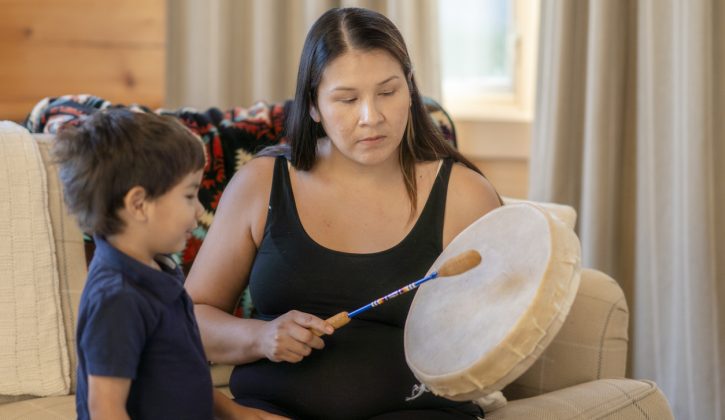Part of the path to reconciliation is learning about and acknowledging the harms that were committed against Indigenous peoples in this country. Parents of young children may wonder how to honestly share this information with their children in an age-appropriate way. SavvyMom spoke with Dr. Cindy Blackstock, executive director of The Caring Society, to get their advice how to explain reconciliation to children.
When is an appropriate age to start introducing reconciliation to children?
Children can be trusted with the truth, so share reliable age-appropriate information. Spirit Bear, our reconciliation Am’bear’rister, has lots of free resources on our website including a child-friendly version of the Truth and Reconciliation Commission’s Calls to Action. Also, check out the Project of Heart which won the Governor General’s Award for teaching about reconciliation.
How can parents start the conversation about reconciliation with their children?
Learning together by reading a book (Spirit Bear has four of them), watch Indigenous media like APTN or CBC Indigenous, or a documentary by Indigenous filmmakers like Alanis Obomsawin, or participate in local Indigenous activities that welcome the public. I am a big believer in change making. You can use Spirit Bear’s calendar to find a free activity that you can do as a family to implement the Truth and Reconciliation Commission’s Calls to Action. Coming up in May is Bear Witness Day which honours Jordan River Anderson, founder of Jordan’s Principle and Honouring Memories; Planting Dreams which invites people to plant gardens to honour children who went to residential schools.
What is appropriate language to use when describing Canada’s colonial history?
What is not appropriate?
Colonialism is still going on so avoid the past tense. Learn how colonialism has shape shifted over time and now takes the form of governments and others not acting on solutions to address ongoing inequalities. For example, in 1996 the Royal Commission on Aboriginal Peoples set out a 20-year plan to get rid of the Indian Act, but governments did not implement it, so it is still on the books. Another language tip is to learn the name of the First Nation, Metis, or Inuit Nation in your territory and avoid using the possessive tense when describing the relationship between non-Indigenous peoples/governments and Indigenous peoples. For example, use First Nations in Canada versus Canada’s First Nations.
Are there key details or moments that parents should touch on?
One of the key elements of colonialism is dehumanizing First Nations, Metis, and Inuit peoples, so it is important that all children learn about the rich diversity and their past and present contributions of Indigenous peoples to Canada. Learning about treaties, Metis scrip, the Indian Act and residential schools are essential, but the key is to draw lessons from the past, so people can recognize current injustices and take peaceful action to address them.
What resources would you recommend for parents wanting to talk to their kids about reconciliation? Resources for kids?
Every parent should read the Executive Summary of the Truth and Reconciliation Commission report and historian John Milloy’s book A National Crime, that tells the truth about residential schools based on Canada’s own documents. Watch films like We Were Children and tune into APTN National News to learn more about what is happening today. For children, the Spirit Bear resources, and Project of Heart are great places to start and look for learning resources made by the First Nations, Metis, and Inuit peoples in your area. For youth and adults, we have a Reconciling History knowledge portal.
What if parents don’t know how to answer their child’s questions?
We are all learning together, so don’t worry if you don’t know the answer – make it a family project to find the answer. There are lots of free online resources produced by Indigenous peoples to guide you.
What next steps should families take to further their own personal reconciliation efforts?
Learning is a start but not enough. Do you know that research has shown that just 3.5% of citizens need to press for active change for governments to act on long standing injustices? Be part of that 3.5% and send a copy of the TRC Calls to Action to all elected officials and those asking for your votes. You can also find all kinds of actions you can take on our website that are
free and don’t take a lot of time.
Anything else to consider when it comes to explaining reconciliation to children?
Embrace the rich diversity of First Nations, Metis, and Inuit peoples in Canada. Learn about the territory that you live on and take their lead on how you can most meaningfully support them. Every election, one thing I do is keep a copy of the TRC Calls to Action near my door and when a candidate asks for my vote, I ask them what they have personally done to implement them.
via savvymom

